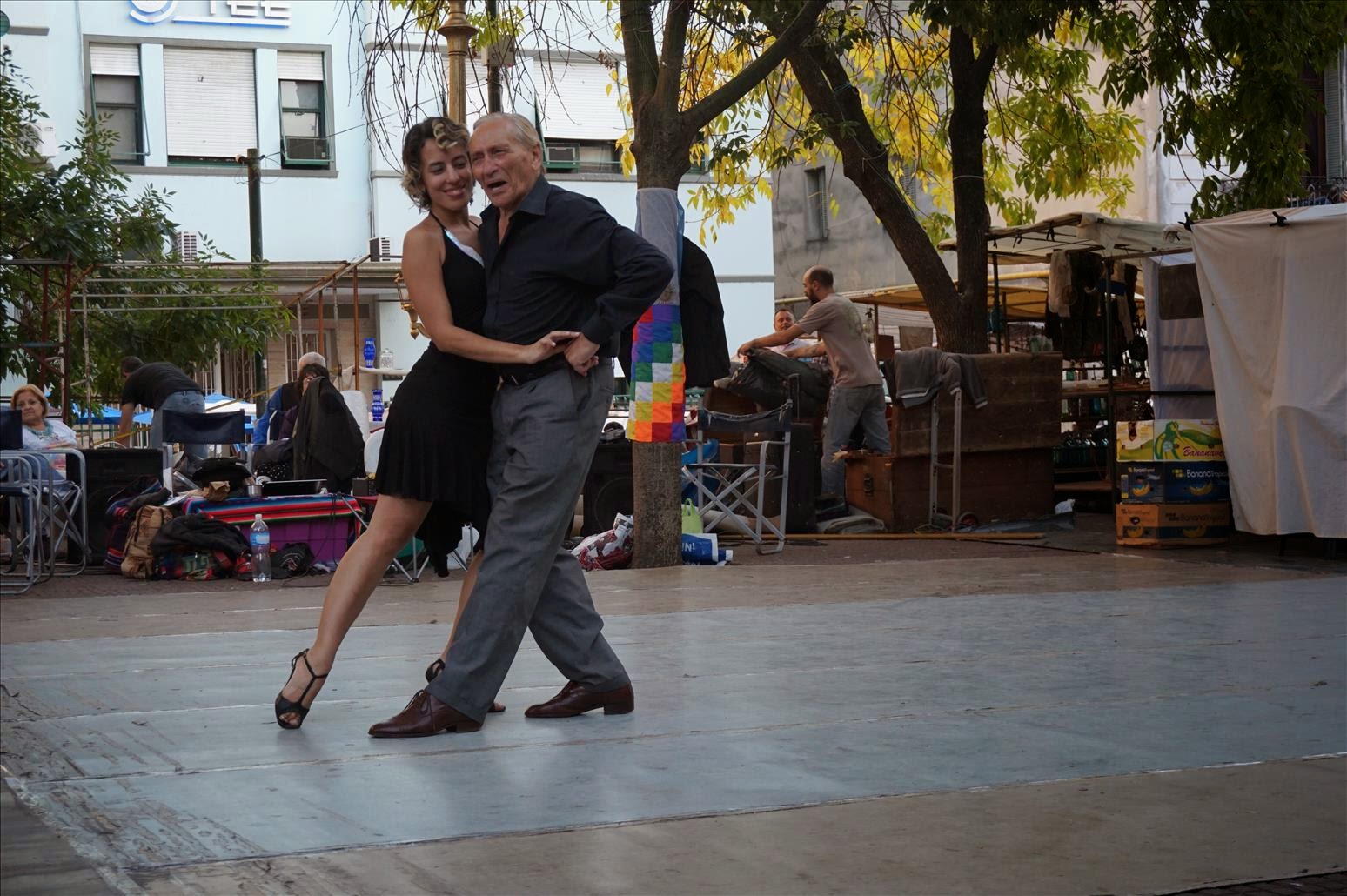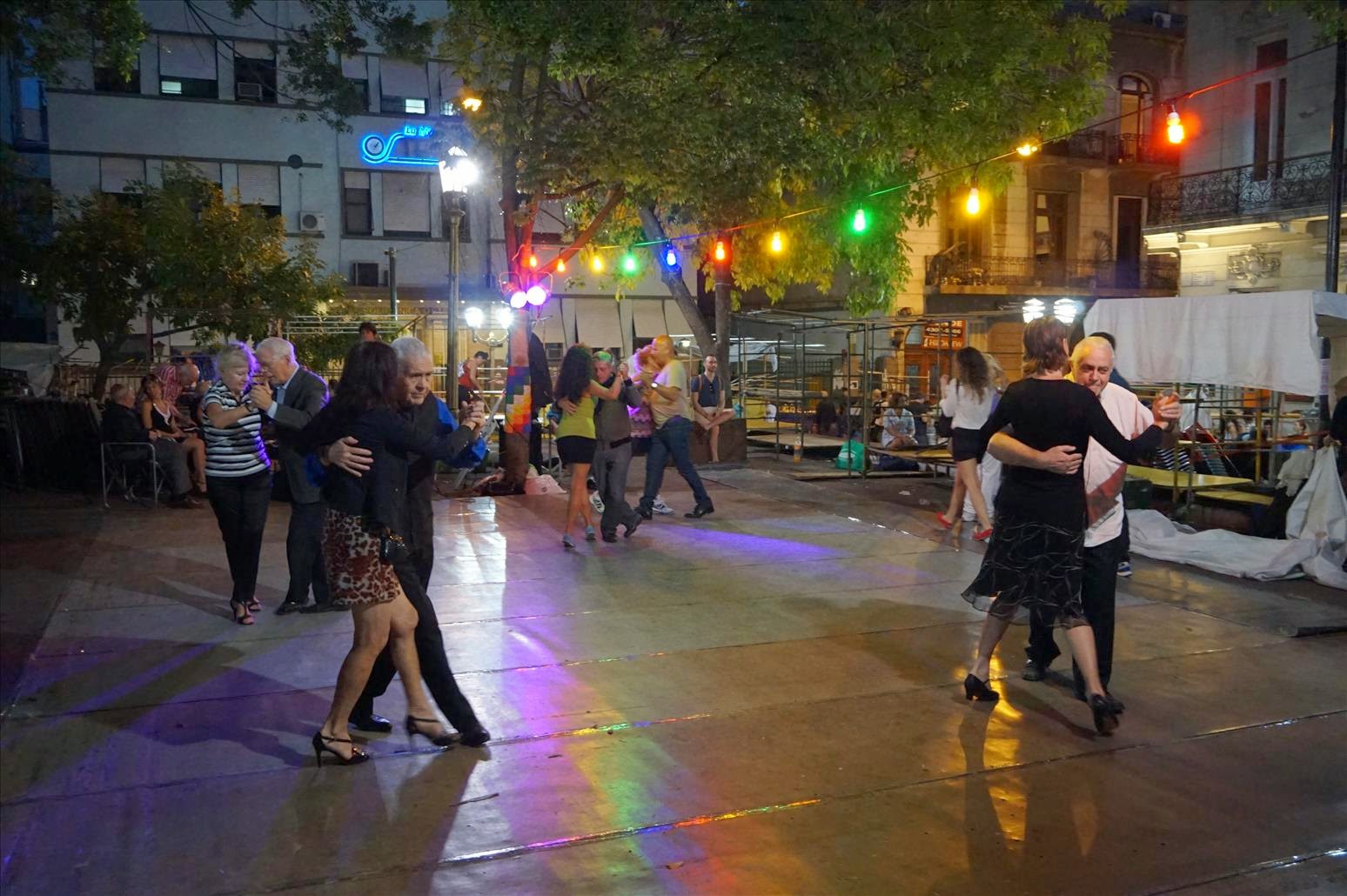Lonely Planet describes Buenos Aires (BA) as an electrifying city but one that "acknowledges the city's riches coupled with the despair of not realizing its full potential." We heard to "be careful" but were mostly just eager and ready to settle in and get to know this city for the next 10 days. We stayed a few nights in San Telmo, the historical heart of the city, which is lined with cobblestone streets, cafes and plazas and is really close to the microcentro (downtown). To understand the city's history better, we toured an interesting archaeological site close to our hostel called El Zanjon de Granados. The site was a rich Spanish family's mansion until 1870 when yellow fever hit the neighborhood and the rich moved to Recoleta. It was then an immigrant tenement house for over 100 people for the next 75 years and then completely abandoned and fell in to disrepair. A man bought it in the 1980's and during the repairs, discovered old tunnels, sewers and water wells dating back to 1730 which he meticulously reconstructed. Historians now believe this was the site of some of the earliest settlement of BA dating back to 1536.
 |
| The rich look funny but they're drinking their mate from a bombilla, just like all the locals do now! |
 |
| Hard to imagine big BA this small! |
 |
| This was where the famous river once was tunneled. Now the museum owns this property from underneath their neighbors. |
We walked through the widest avenue in the world, Av. 9 de Julio (the date of independence), which is not actually the widest (Brazil has one twice as wide) but Argentineans will tell you the one in Brazil is a highway and thus, it is still the widest avenue in the world.
I liked hearing more about Eva Peron, the wife and First Lady of President Juan Peron back in the 1940's and early 50's. She worked tirelessly for social issues like education and voting (women were only finally able to vote in Argentina in 1947!) and the entire country was devastated when she died of cervical cancer in 1952 (she was the first Argentine to ever receive chemotherapy, which was still in its infancy as a treatment method). More on her later when we tour her tomb in Recoleta.
 |
| The famous balcony overlooking Plaza de Mayo where Eva "Evita" Peron, the beloved First Lady from the 1940's, would give her speeches. We tried to sing like Madonna from the movie (also filmed here) but it didn't go over well. |
After the tour, we ventured back to the famous Cafe Tortoni, the oldest coffee shop in the country. Opened in 1858, it has hosted intellectuals, politicians and artists to relax and enjoy their famous coffees. We tried the Submarino which was a hot glass of milk and a piece of chocolate, shaped like a submarine, that you drop in the milk. Soon, it's delicious hot chocolate.
 |
| I loved the historic photos they displayed in the back like this one showing the Cafe in 1901. |
That evening, we moved to our airbnb in Palermo, a newer part of the city, and met up with Ravina, our Canadian friend from our Mendoza airbnb for dinner in the fashionable Palermo Soho district. After a great dinner, we ventured to Frank's Bar, a trendy speakeasy where we needed a code and a special number to enter the bar through an old (and working!) telephone booth.
On Sunday, we found yoga in the local park and a local flea market where Mark found a functioning Remington Portable typewriter from the 1920's for a great deal. Sunday is also the big San Telmo Market which runs for many blocks and includes thousands of unique art, jewelry and gifts.
After the vendors break down their stalls, Plaza Doreggo turns in to a molanga where tango music and a makeshift dance floor allows anyone who wants to partake. We let the experts do their thing and just enjoyed from the sidelines.























































